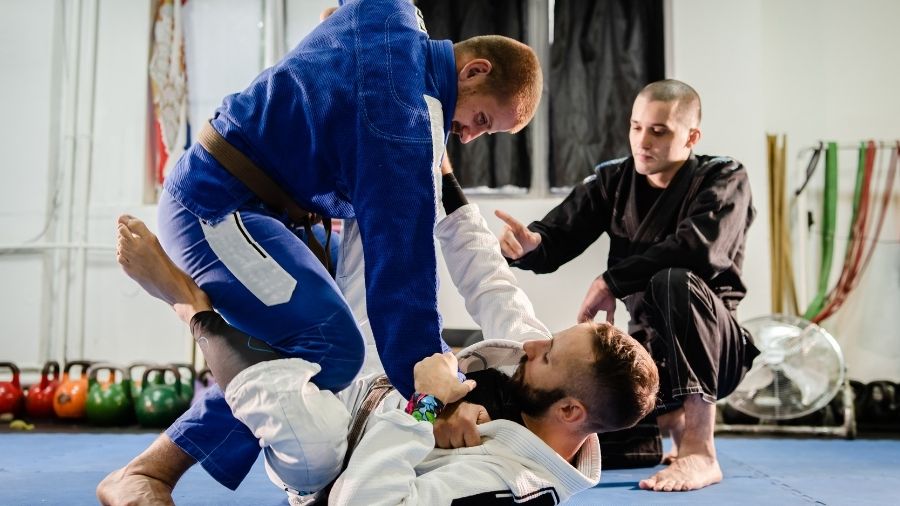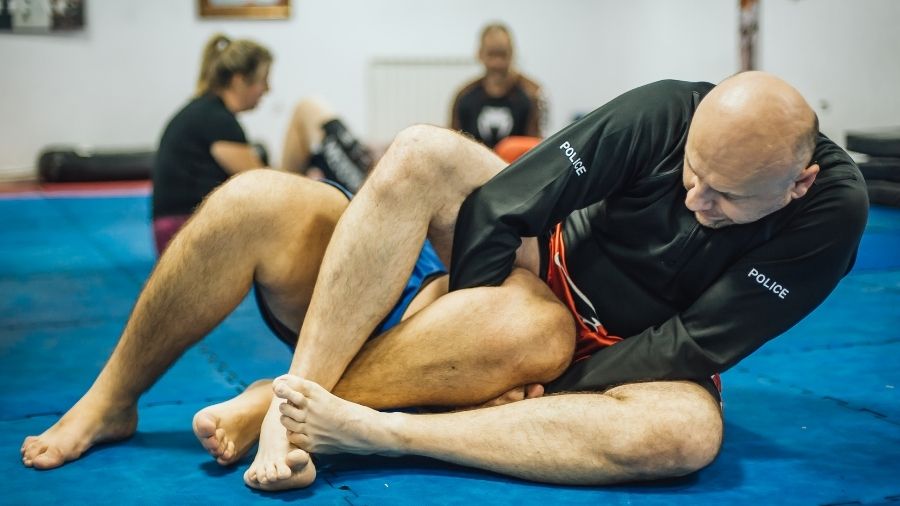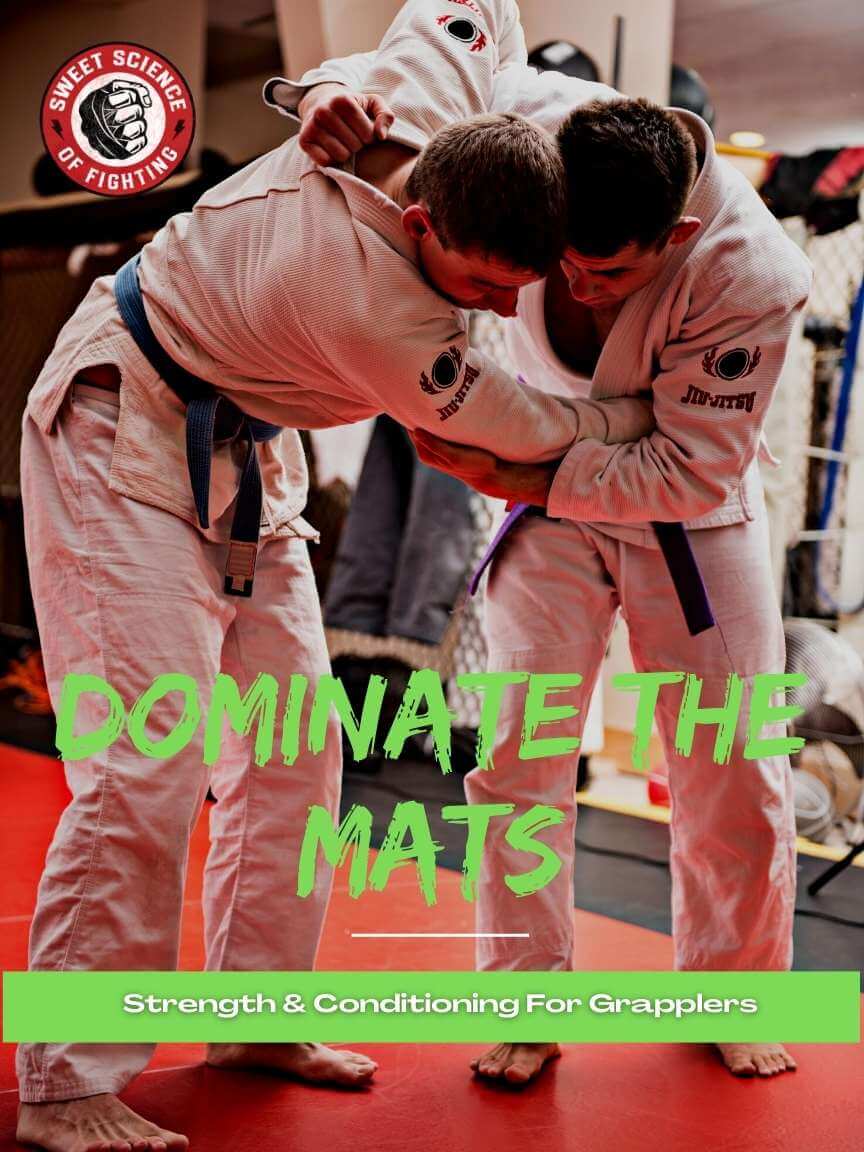As BJJ becomes more professional, and the prize purses become larger, we are seeing highly muscular BJJ practitioners winning titles. A combination of more time to train, BJJ athletes trying to gain a competitive edge, and “special supplements” have turned the typical skinny BJJ physique into the many muscular ones we see today. But is it the BJJ that builds this muscle?
BJJ does not build muscle as it doesn’t meet the key criteria for building muscle which is high levels of mechanical tension and metabolic stress. If you want to build muscle for BJJ, you need to lift weights.
If BJJ doesn’t build muscle, what can BJJ do for your body?
Does BJJ Build Muscle?

BJJ does not build any appreciable muscle mass as BJJ does not meet the key requirements to stimulate muscle growth. That is mechanical tension and metabolic stress [1].
Mechanical tension is maximized by generating high forces through a muscle stretch. That is lifting heavy loads through a full range of motion. But it is not limited to heavy loads. Lighter loads can also maximize mechanical tension when taken to failure or close to failure [2].
Metabolic stress is the build-up of by-products from energy production [3]. This is the energy that is supplied to your muscles to contract and produce force. These metabolic by-products build up when performing high reps of exercises. For example, that “burning” feeling you get during your last few reps of a grueling lifting set.
That is the accumulation of these metabolic by-products that increase metabolic stress which signals muscle growth. Even isometrics, especially at long muscle lengths, can induce high levels of metabolic stress [4].
However, BJJ does not maximize any of these muscle-building mechanisms. At least no way near traditional weight training. While there is plenty of external resistance trying to hold and manipulate another human being, most contractions are isometric at short muscle lengths.
Think about the isometric contraction of your legs to hold someone in closed guard. Or the intense grip needed to hold the Gi. This stimulus is not enough to build muscle.
Can You Get In Shape With BJJ?
BJJ can get you in great shape. It is a combination of low and high-intensity exercise mixed with learning a new skill to keep you engaged and hungry for more. Not to mention how fun it is to roll with your friends and bring out that competitive spirit.
5 Step Blueprint To Build A BJJ Strength Workout To Demolish Your Opposition
Learn how to plan your strength training to maximize transfer to the mats.
The fitness required for BJJ is not anything like running or cycling. You can be marathon fit and get your butt kicked in a 5-minute roll on the mats and be left gasping for air. Being BJJ conditioned is a completely different game compared to traditional cardio as it is a full-body workout.
Further, because you are learning new skills every single session with a ranking system, you’ll be hooked on making progress and having fun while getting in shape.
Will BJJ Make You Stronger?
BJJ will make you stronger. Have you felt the grip of your black belt professor? That grip is often not developed through specific BJJ grip training. Instead, it’s many, many years of BJJ that has developed a bone-crushing grip.
Holding people in your closed guard will also develop strength in your inner thighs. And various chokes, seatbelt grips, and gable grips will absolutely develop strength in your biceps. This kind of strength is what would be considered specific BJJ strength and often doesn’t translate to general lifting strength (i.e. squats and bench press). But who cares about that when your sole goal is to strangle or submit someone until they tap.
Does BJJ Build Legs?

BJJ won’t build the muscles of your legs. You will develop some isometric strength of the inner thighs from holding your closed guard, but that’s as far as you’ll get regarding leg size. This is further evidenced by strength testing of elite and non-elite BJJ practitioners [5].
They found that elite and non-elite BJJ practitioners did not show any difference in squat strength indicating that leg strength, and therefore leg muscle mass, may not be that important for BJJ performance.
Further, their squats were only 1.1-1.3x relative to bodyweight. Meaning these BJJ athletes could only squat just over their body weight on the barbell which would be considered a very low squat. Especially since they could bench press more than they could squat.
Can You Get Abs From BJJ?
You can definitely get abs from BJJ. BJJ, like any other physical activity, helps expend energy which will aid you in creating a caloric deficit. That is burning more calories than you consume. This means that it doesn’t just come down to BJJ.
But also, your diet. If you are doing BJJ for weight loss, you need to make sure your diet aligns with your goals. That means eating moderate to high protein and whichever ratio of carbohydrates and fats you prefer.
Most important is your total calorie intake which should ideally be less than 15 times your bodyweight in pounds as an estimate. This is how you will get abs from doing BJJ.
What Does BJJ Do To Your Body?
While BJJ may not turn you into the muscular BJJ athletes you see at ADCC, it can help you get into great cardiovascular shape and reduce body fat when the correct diet is implemented. Further, expect to gain significant strength in your hands and arms as you are maximally contracted to try to hold opponents in certain positions.
Is BJJ Good For Building Muscle?
BJJ is not good for building muscle. While you may create a lot of muscular tension resisting BJJ practitioners from passing your guard or escaping, it is often at short muscle lengths. Overall, the key mechanisms of hypertrophy (muscle growth) are not satisfied meaning if you want to gain muscle for BJJ, hit the gym!
Dominate The Mats And Manhandle The Opposition
3 different strength training programs turn you into a monster on the mats. Prepare yourself for the mats and for competition while prioritizing your BJJ training.


References
1. Schoenfeld, B. J. (2010). The mechanisms of muscle hypertrophy and their application to resistance training. The Journal of Strength & Conditioning Research, 24(10), 2857-2872.
2. Schoenfeld, B. J., Peterson, M. D., Ogborn, D., Contreras, B., & Sonmez, G. T. (2015). Effects of low-vs. high-load resistance training on muscle strength and hypertrophy in well-trained men. The Journal of Strength & Conditioning Research, 29(10), 2954-2963.
3. Schoenfeld, B. J. (2013). Potential mechanisms for a role of metabolic stress in hypertrophic adaptations to resistance training. Sports medicine, 43(3), 179-194.
4. Oranchuk, D. J., Storey, A. G., Nelson, A. R., & Cronin, J. B. (2019). Isometric training and long‐term adaptations: Effects of muscle length, intensity, and intent: A systematic review. Scandinavian journal of medicine & science in sports, 29(4), 484-503.
5. Andreato, L. V., Lara, F. J. D., Andrade, A., & Branco, B. H. M. (2017). Physical and physiological profiles of Brazilian jiu-jitsu athletes: a systematic review. Sports medicine-open, 3(1), 9.

